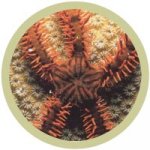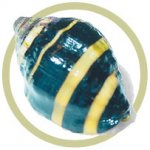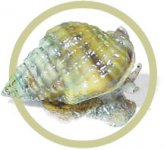Ok this is a new one on me. I have had a brittle star for about a year now. It is dark brown with black bands on its legs. It has I would say tripled in size. It is very shy and has never come all the way out of the rocks. If you shine a flashlight on it will just try to hide even deeper in the rocks. Well last night I came home and it was out. It was on the top of the rockwork lying against the back glass. My wife said it had been like that for a while. Well after a while it moved back down into the rocks. I looked at where it had been sitting against the glass and there was a patch of eggs about 2" x 3". I thought they would all be fish food but the fish were leaving them alone. I have another brittle in there but it is a different kind. It is one of the big green ones. Don’t know if they can mate.
Questions:
1. Are they asexual?
2. Has this happened to anybody else?
3. Highly unlikely I know but what would be the mortality rate?
Thanks,
Shane
Questions:
1. Are they asexual?
2. Has this happened to anybody else?
3. Highly unlikely I know but what would be the mortality rate?
Thanks,
Shane












